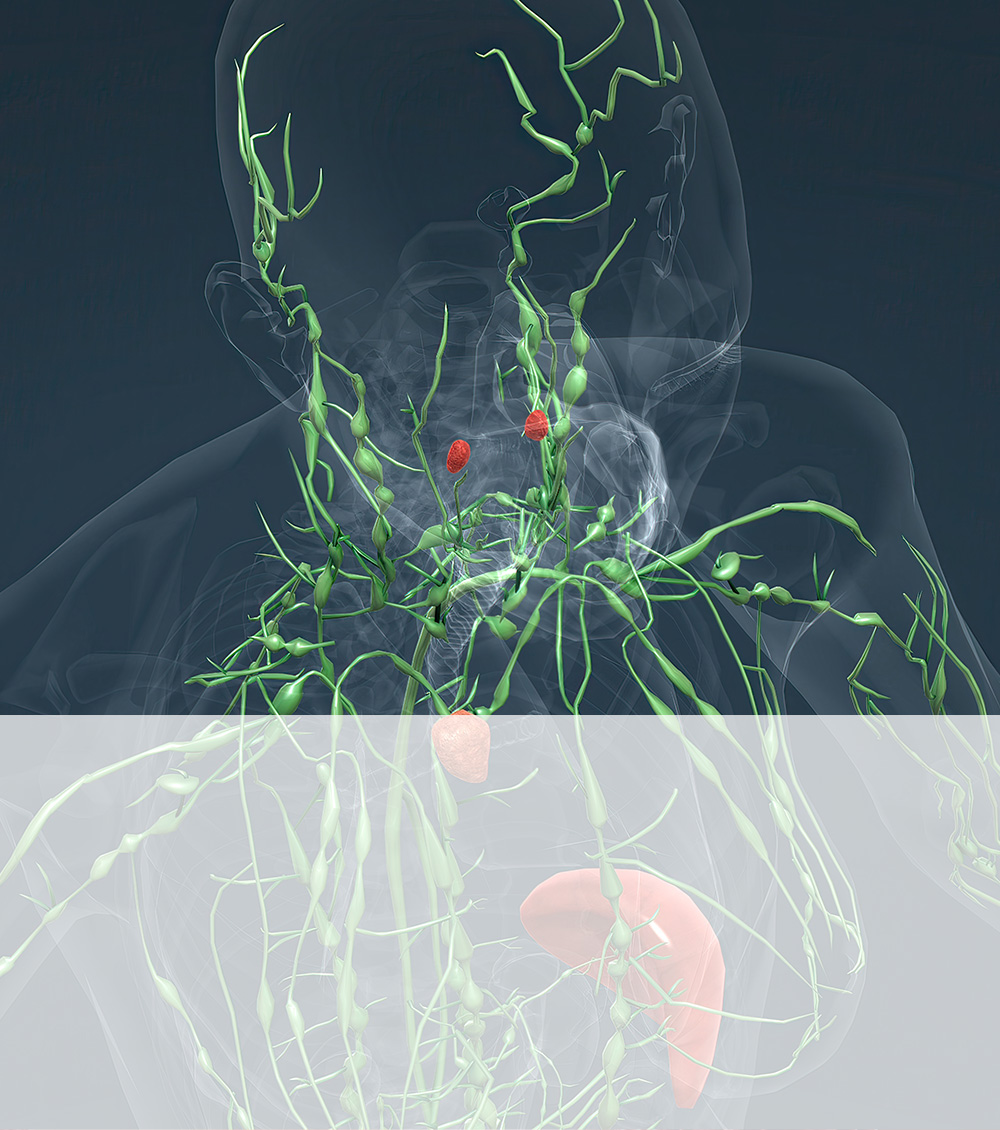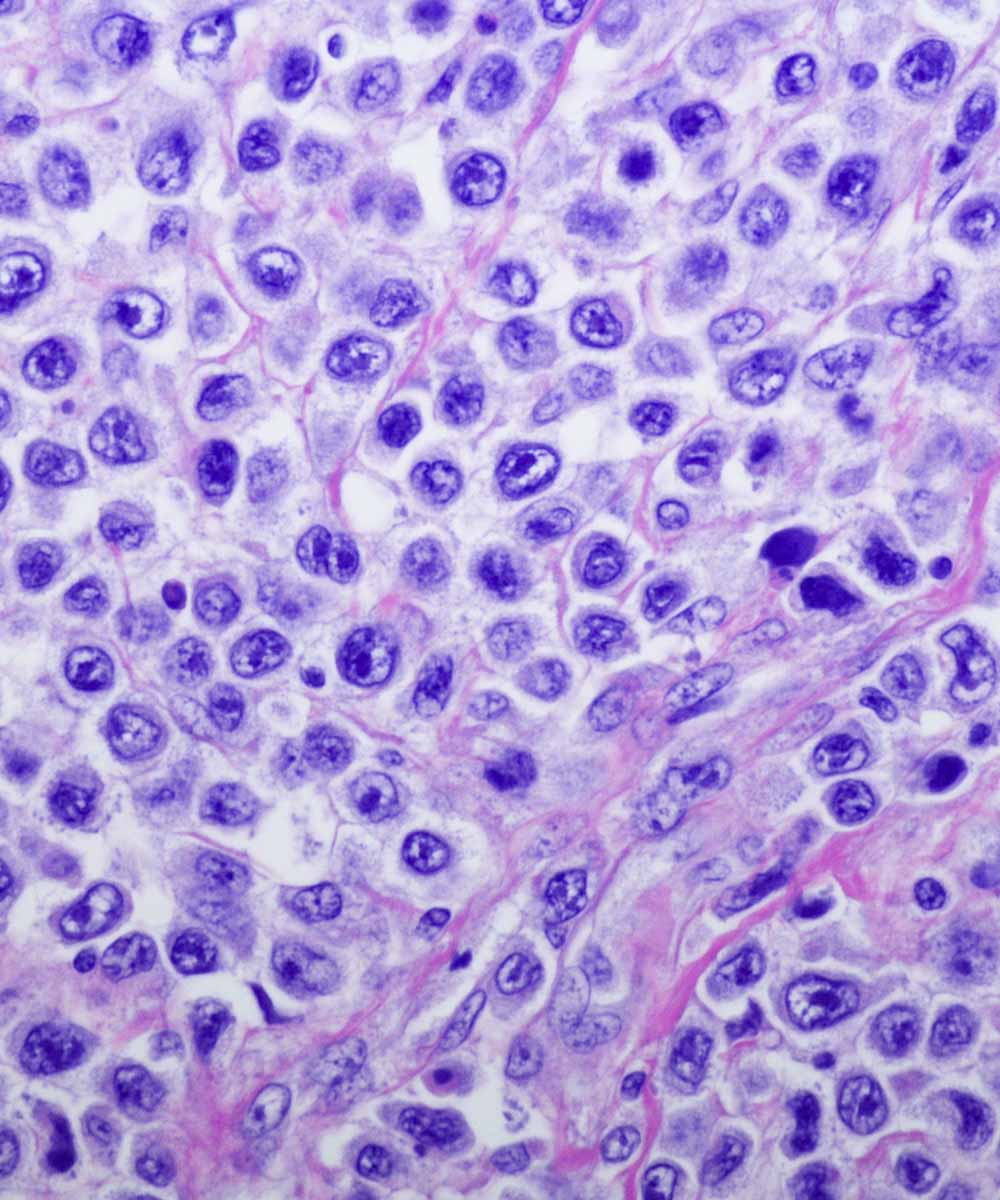Lymphoma
Lymphocytes are part of the body’s lymphatic system, which includes organs like the lymph nodes, spleen, thymus and bone marrow. Lymphoma is a cancer of the lymphatic system, which develops in lymphocytes, a category of white blood cells. These cells help fight diseases/infections in the body and play an essential role in building the body’s immune system.
Due to the presence of cancer cells in the lymph system, it quickly spreads to different tissues and organs throughout the body, most often to the liver, bone marrow, or lungs. They are often treatable, and the prognosis depends on the type and the stage of lymphoma.
People can develop lymphoma irrespective of age, but it is among the most common causes of cancer in children and young adults aged 15 to 24, and the condition is often treatable.
Symptoms of Lymphoma:
The overlapping of symptoms can often lead to misdiagnosis, and it would be best for individuals with persistent swollen glands to have a consultation with their doctor.
Types of Lymphoma
There are two main types of lymphoma: Hodgkin and non-Hodgkin lymphoma, both having multiple sub-types.
Non-Hodgkin lymphoma
Non-Hodgkin lymphoma, the most common type, typically develops from B and T lymphocytes (cells) in the lymph nodes or tissues throughout the body. Tumour growth in non-Hodgkin lymphoma may not affect every lymph node, often skipping some and growing on others. It accounts for 95% of lymphoma cases.
Hodgkin lymphoma
Hodgkin lymphoma is a cancer of the immune system, identified by the presence of Reed-Sternberg cells, which are abnormally large B lymphocytes. In people with Hodgkin Lymphoma, the cancer usually moves from one lymph node to an adjacent one.
Other symptoms of both Hodgkin and non-Hodgkin lymphoma may include:
Some additional symptoms of non-Hodgkin lymphoma include:

Diagnostics Facilities
Advanced Cancer Diagnostics
Advanced Cancer Treatment
General Diagnostic Facilities
Risk factors of Lymphoma
Different risk factors increase the risk of both types of lymphoma.
Non-Hodgkin lymphoma
Risk factors for non-Hodgkin lymphoma include:
- Age: Most lymphomas occur in people aged 60 years and older. However, some types are more likely to develop in children and young adults.
- Sex: Some types are more likely in women. Men have a higher risk of other types of Non-Hodgkin Lymphoma.
- Ethnicity and location: African American and Asian American people have a lower risk for non-Hodgkin lymphoma than white people. Non-Hodgkin Lymphoma is more common in developed nations.
- Chemicals and radiation: Nuclear radiation and certain agricultural chemicals have links to non-Hodgkin lymphoma.
- Immunodeficiency: Individuals with a less active immune system have higher risks due to the intake of anti-rejection medications following an organ transplant or HIV.
- Autoimmune diseases: This type of disease occurs when the immune system attacks the body’s cells examples include rheumatoid arthritis and celiac disease.
- Infection: Certain viral and bacterial infections that transform lymphocytes, such as the Epstein-Barr virus (EBV), increase the risk. This virus causes glandular fever.
- Breast implants: These lead to the formation of anaplastic large-cell lymphoma in the breast tissue.
- Body weight and diet: Excess weight and obesity may affect the development of lymphomas. However, more research is necessary to confirm the link.
Hodgkin lymphoma
Risk factors for Hodgkin lymphoma include:
- Infectious mononucleosis: The Epstein-Barr virus (EBV) can cause mononucleosis. This disease increases the risk of lymphoma.
- Age: It affects young people aged 20–30 years, and those above 55 years have a higher risk of lymphoma.
- Sex: Hodgkin lymphoma is more common in men than women.
- Family history: The risk is slightly higher in individuals if the sibling is infected with Hodgkin lymphoma, and the risk significantly increases if the sibling is an identical twin.
- HIV infection: This can weaken the immune system and increase the risk of lymphoma.

Diagnosis of Lymphoma
A doctor may request imaging scans to help diagnose lymphoma since there are no routine screening tests for lymphoma. If an individual is experiencing persistent viral symptoms, it is advisable to seek medical consultation immediately.
The doctor gets acquainted with the individual’s personal and family medical history and tries to rule out other factors. A thorough physical examination will be conducted, including a closer inspection of the chin, neck, abdomen, groin, and armpits, where swellings tend to occur. He then looks for signs of infection near lymph nodes since this accounts for most cases of swelling.
Tests for Lymphoma
- Blood tests and biopsies: These detect the presence of lymphoma and help to categorize different types.
- A biopsy involves a surgeon taking a sample of lymph tissue and sending it for pathological analysis. The surgeon may remove a small section or all of the lymph nodes; in some cases, only a needle is used to obtain tissue samples.
- A bone marrow biopsy may be required and is performed under the influence of a local anaesthetic, a sedative, or a general anaesthetic.
- Biopsies and other tests can confirm the stage of the cancer, which enables the consultant to determine whether the cancer has spread to other parts of the body.
- Imaging tests: A doctor may request imaging scans, such as CT scans and PET scans.
- A spinal tap: This procedure is performed under the influence of the local anaesthetic, wherein the doctor uses a long, thin needle to collect and test spinal fluid.
- Cancer Staging: Depending on the cancer type, growth rate, and cellular characteristics, the cancer stage is determined. In stage 0 or 1, the cancer stays in a confined area. By stage 4, it might have spread to more distant organs and can be more challenging to treat.
A Lymphoma is considered indolent when it remains in one place and is advancing slowly. Some lymphomas are aggressive and spread quickly to other parts of the body.


Treatment for Lymphoma
Chemotherapy is one of the possible treatments that doctors use to treat lymphoma. The course of treatment depends on the type of lymphoma a person has and the stage it has reached.
Indolent or slow-growing lymphoma may not require treatment. Watchful waiting may be enough to make sure the cancer does not spread.
If treatment is necessitated it may involve the following:
Outlook of Lymphoma
- More than 72% of people diagnosed with non-Hodgkin Lymphoma have increased possibilities of surviving for at least five years with appropriate treatments. 86.6% of people with Hodgkin Lymphoma receiving appropriate treatment have increased chances of surviving for at least five years.
- The chances of better treatment outcomes decrease as lymphoma advances. It is essential to seek medical attention for any symptoms of a cold or infection that continue for an extended period. Early diagnosis is vital to improve an individual’s survival chances with successful treatment outcomes.
Doctors

Dr. Deepan Rajamanickam

Dr. Karthick Rajamanickam

Dr. Mahalakshmi



